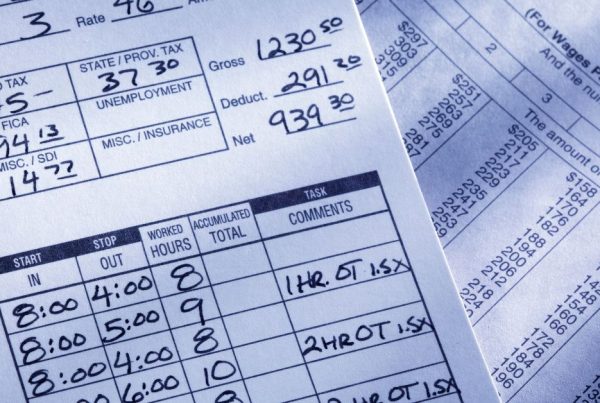
Accurate time tracking is crucial for engineering firms aiming to enhance their project bidding accuracy. By leveraging detailed insights into project timelines and labor costs, firms can avoid the pitfalls of underestimating bids, which often lead to financial losses and strained client relationships. Utilizing historical time data enables engineering firms to create more precise future project bids, ultimately improving profitability and maintaining competitiveness in the industry.
Understanding the Importance of Accurate Time Tracking
Accurate time tracking is a vital component in project management, especially for engineering firms that handle complex, time-sensitive projects. It provides detailed insights into how project timelines and labor costs unfold over the course of a project. By meticulously recording the hours spent on each task, project managers can monitor progress in real-time and ensure that all phases of a project are completed within the allocated time frame. This not only helps in meeting deadlines but also in maintaining the quality of work. Time tracking serves as the backbone of setting and achieving project milestones, allowing project managers to compare actual time spent with estimated time, providing a clear metric against which progress can be measured (source).
Underestimating project bids can have severe consequences, particularly in industries like engineering where projects are often complex and resource-intensive. Financial losses are a common outcome, as projects that exceed their estimated time and budget require additional funding and resources. This can strain client relationships, as clients may feel misled or dissatisfied with the unexpected costs and delays. A study on underpricing construction projects highlighted that underestimating bids could lead to deceptive practices such as unwarranted variations or reducing the standard of work to cut costs (source). These practices might offer short-term relief but do not contribute to long-term competitiveness or profitability. In contrast, accurate time tracking helps avoid such pitfalls by providing reliable data that can be used to create realistic project estimates.
Leveraging historical time data is invaluable for creating more precise future project bids. Historical data provides a reliable basis for estimating the time required for similar tasks or projects in the future. This can significantly enhance the accuracy of project bids, ensuring that all aspects of the project are accounted for in terms of time and labor costs. Regular and accurate time tracking can boost productivity and improve employee engagement and performance (source). By analyzing past projects, firms can identify patterns and trends that help in making more informed decisions about resource allocation and project timelines. This strategic use of historical data ultimately leads to more accurate project bids, reducing the likelihood of underestimation and its associated risks.
How Engineering Firms Can Utilize Time Tracking Data
Effectively harnessing time tracking data can significantly enhance the precision of project bids for engineering firms. Below is a step-by-step guide to setting up a robust time tracking system within your organization.
Step-by-Step Guide on Setting Up Effective Time Tracking Systems
- Identify Objectives and Requirements:
- Determine the primary goals for implementing a time tracking system, such as improving project bids, boosting employee productivity, and precise billing.
-
Engage with stakeholders to gather their requirements and ensure the system meets their needs.
-
Select the Right Time Tracking Software:
- Opt for software that integrates seamlessly with existing tools like QuickBooks.
- Ensure the software is user-friendly and accessible via multiple devices, including web and mobile apps.
-
Look for features such as GPS tracking, automated time entry, and the capability to attach receipts (source).
-
Implement the System:
- Roll out the software gradually, starting with a pilot group to fine-tune the process.
- Conduct training sessions to ensure all employees understand how to use the system.
-
Develop and distribute a comprehensive guide and FAQ for reference.
-
Set Up and Monitor Metrics:
- Define key metrics to track, such as hours worked per task, the time allocated to different project phases, and employee productivity.
-
Use dashboards to display real-time data and facilitate monitoring (source).
-
Ensure Data Accuracy and Consistency:
- Regularly audit time entries and follow up on any discrepancies.
- Encourage employees to log their time daily to avoid inaccuracies.
-
Use automated reminders and alerts to ensure timely submissions (source).
-
Analyze and Utilize Data:
- Periodically review the collected data to identify trends and areas for improvement.
- Use historical data to enhance the accuracy of future project bids.
- Adjust project timelines and resource allocations based on data insights (source).
Examples of Key Metrics and Data Points to Monitor
- Hours Worked Per Task:
- Track the time spent on individual tasks to understand labor costs and efficiency.
-
Use this data to refine task durations in future project bids.
-
Project Phases:
- Monitor time allocation across different phases of a project (e.g., planning, design, implementation).
-
Identify phases that consistently overrun and investigate underlying issues.
-
Employee Productivity:
- Measure productivity by comparing logged hours to completed deliverables.
-
Identify high-performing employees and areas where additional support may be needed.
-
Cycle Time and Lead Time:
- Track the duration from task initiation to completion (cycle time) and from task assignment to start (lead time).
-
Use these metrics to optimize workflows and reduce bottlenecks (source).
-
Change Failure Rate:
- Measure the percentage of tasks or project phases that require rework.
- Use this data to improve quality control processes and reduce errors (source).
Tips for Ensuring Data Accuracy and Consistency
- Regular Audits:
- Conduct regular audits of time entries to identify and correct inconsistencies.
-
Implement a review process where team leads verify the accuracy of submitted timesheets.
-
Automated Reminders:
- Set up automated reminders for employees to log their time daily or weekly.
-
Use alerts to notify managers of any missing or late submissions.
-
Training and Support:
- Provide ongoing training to ensure all employees are proficient in using the time tracking system.
-
Offer support channels for employees to seek help with any issues they encounter (source).
-
Clear Policies and Guidelines:
- Establish clear policies on how and when time should be logged.
-
Communicate these guidelines regularly and ensure they are accessible to all employees.
-
User-Friendly Interfaces:
- Select time tracking software with intuitive and user-friendly interfaces to minimize user errors.
- Ensure the software is accessible and easy to use on all devices (source).
By following these steps, engineering firms can effectively utilize time tracking data to create more accurate project bids, enhance productivity, and improve overall project management. Minute7’s comprehensive time tracking and expense reporting solutions can play a pivotal role in achieving these objectives. To experience the benefits firsthand, sign up for a free trial at Minute7 Free Trial or learn more at Minute7.
Enhancing Competitiveness and Profitability Through Data-Driven Bidding
Strategies for Analyzing Historical Time Tracking Data to Identify Patterns and Trends
Analyzing historical time tracking data is a strategic approach to enhance the accuracy of project bids. By meticulously reviewing past time logs, engineering firms can identify recurring patterns and trends. This involves looking at the duration of similar past projects, the allocation of resources, and the time spent on various tasks. Such analysis helps in understanding where time was efficiently used and where bottlenecks occurred.
Advanced data analytics tools can further aid in this process by offering visual representations of data, such as graphs and heat maps, which highlight areas of inefficiency and potential improvements. For instance, if data shows that certain tasks consistently take longer than estimated, firms can adjust future bids to reflect these realities, thereby avoiding underestimations that can lead to project delays and cost overruns.
How to Use This Data to Forecast Future Project Costs and Timelines More Accurately
Forecasting future project costs and timelines becomes significantly more accurate when grounded in historical data. Here’s how engineering firms can leverage this data:
-
Benchmarking: Use past project data to set benchmarks for new projects. This involves establishing standard timeframes and cost estimates for similar tasks based on historical performance.
-
Resource Allocation: Analyze time tracking data to understand the productivity of various team members and allocate resources more efficiently. This ensures that the right people are assigned to the right tasks, optimizing both time and costs.
-
Risk Assessment: Historical data helps in identifying potential risks and uncertainties. By understanding where past projects went off track, firms can develop contingency plans and adjust bids to include risk mitigation measures.
-
Dynamic Adjustments: Implement dynamic project management practices where ongoing time tracking data is continuously compared against initial estimates. This allows for real-time adjustments in resource allocation and project timelines, ensuring projects stay on track and within budget.
Case Studies or Hypothetical Examples Showing the Positive Impact of Data-Driven Project Bids on Profitability and Client Satisfaction
Case Study: Engineering Firm A
Challenge: Engineering Firm A consistently underestimated project bids, leading to cost overruns and client dissatisfaction.
Solution: The firm implemented a robust time tracking system using Minute7, enabling them to collect and analyze detailed time data from past projects. By identifying patterns and trends, they adjusted their bidding process to reflect more accurate time and cost estimates.
Outcome: The accuracy of project bids improved by 25%, reducing cost overruns significantly. Client satisfaction increased as project timelines and budgets became more predictable, leading to repeat business and referrals.
Hypothetical Example: Project Bidding in a Civil Engineering Project
Scenario: A civil engineering firm is bidding for a new infrastructure project. Historical data shows that similar projects typically experience delays in the permitting phase.
Action: The firm uses this data to extend the estimated timeline for the permitting phase in their bid. They also allocate additional resources to handle potential delays.
Result: The bid is more realistic, accounting for probable delays. This transparency is appreciated by the client, who awards the project to the firm, recognizing their thorough planning and risk management. Ultimately, the project is completed on time and within budget, enhancing the firm’s reputation and profitability.
Empowering Engineering Firms with Data-Driven Bidding
Incorporating historical time tracking data into the bidding process transforms how engineering firms approach project estimates. By leveraging data-driven insights, firms can enhance the accuracy of their bids, leading to improved profitability and client satisfaction. Accurate time tracking allows firms to understand the real-time and labor costs associated with past projects, providing a solid foundation for predicting future project requirements.
Minute7 offers a comprehensive time tracking and expense reporting solution that integrates seamlessly with QuickBooks, ensuring that engineering firms can make data-backed decisions with ease. The platform’s user-friendly interface and robust features, such as timesheets, expense tracking, and mileage calculators, make it an ideal choice for engineering firms looking to streamline their project management processes.
By utilizing Minute7’s time tracking capabilities, engineering firms can ensure data accuracy and consistency, which is crucial for reliable project estimates. The ability to analyze historical data helps in identifying patterns and trends, allowing firms to forecast future project costs and timelines more accurately. This strategic approach not only minimizes the risk of underestimating project bids but also enhances overall project management, leading to successful project outcomes and satisfied clients.
To experience the benefits of accurate time tracking and data-driven project bidding, sign up for a free trial today or learn more about Minute7.



